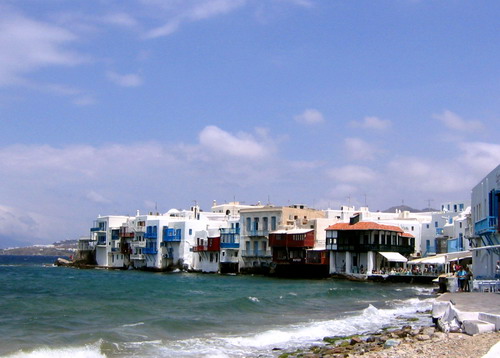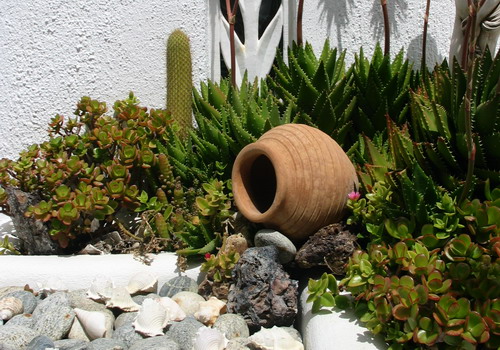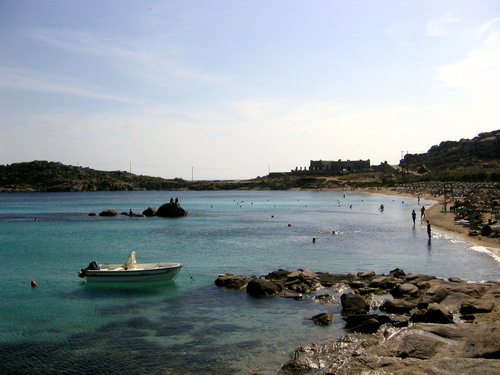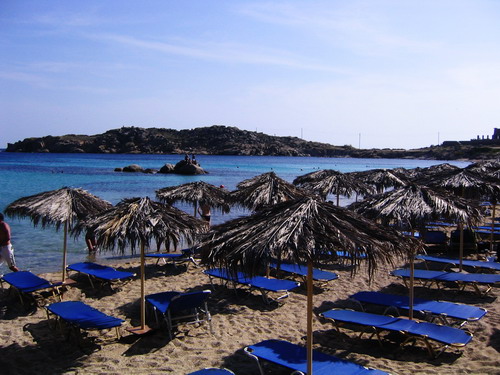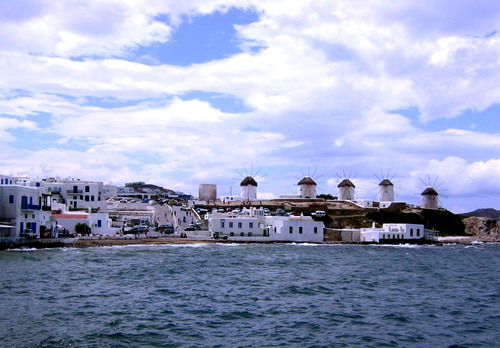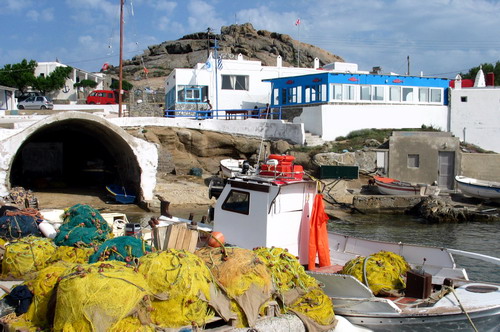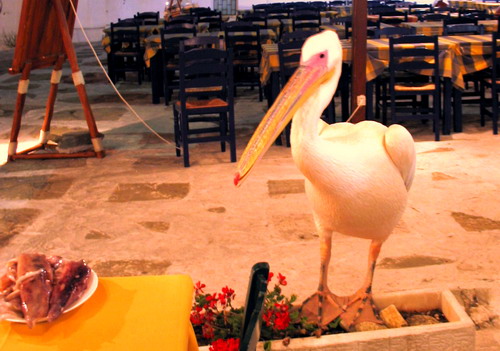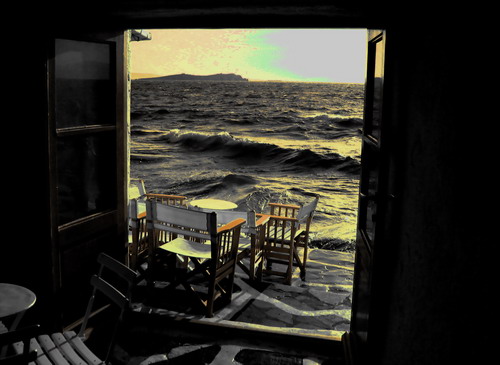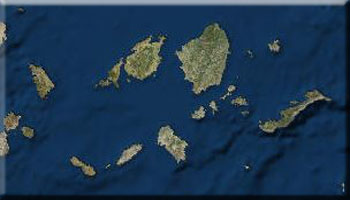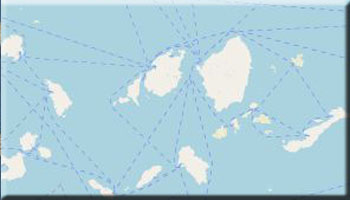Mykonos, Delos, Rineia, and a group of uninhabited islets comprise a small archipelagos within the Cyclades islands. Mykonos is flat, with its highest point reaching 364 meters. The island covers an area of 75 square kilometers. The main rock is granite while the landscape is impressively devoid of trees, with just sparse coverage at specific areas-Panormos, Kalafatis, Ftelia-of low, thick bushes. Rineia (area 13 square kilometers, highest altitude 149 meters) is also flat and used for grazing as some areas are covered by phrygana; there are also a number of abandoned fields. Tragonisi (area 1.1 square kilometers, highest altitude 149 meters) is rugged and inaccessible with several sheer areas. The islet has mines and some flat stretches. Stapodia (area 0.5 square kilometers, highest altitude 133 meters) is rocky, with a number of cliffs, a few flat areas, and sparse ground cover of phrygana.
Mykonos has a generally dry climate with mild winters. Typical of the island's weather are the strong northerly winds known as meltemia (singular=meltemi) and which blast over the island during the day in summer. Snow is rare, while there is no rainfall in summer and very little in winter. During the summer months, the sun is bright and very warm, thus visitors are warned to pack proper protection.
Mykonos's barren landscape is actually far richer in fauna than would seem at first glance. The bald hills shelter many small creatures from the visitor's gaze. The island's signature fauna are the large, spiky lizards that sit atop rocks or dart among the dry stone fences. The crocodile owes its name to this lizard as when the Ionians arrived in Egypt they compared the crocodiles swimming in the Nile-and known until then as champsai, with the "Mykonos lizard" and finding them similar in appearance gave them the name of crocodile. Indeed, on the island, the lizard-or agama stelio-is known among locals today as a "land crocodile" or krokodilaki (little crocodile) or korkodeilas.
According to an article by Achilleas Dimitropoulos for the Goulandris Natural History Museum, there are two habitats that are especially significant for the island's wildlife-the coastal wetlands at Panormos and Ftelia which are seasonally flooded and turn into small saltwater lagoons. Both are important resting stops on the routes of migratory birds. Within these wetlands there are a number of currents and drainages spots, such as the one formed at Marathi where a dam was built to create a new wetland. The sandbanks at Ano Meria are quite rich in silica.
Mykonos's typically Cycladic terrain and climate-arid and dry-aren't conducive to traditional farming and only limited supplies of high quality cereals, wines, and vegetables are produced that are used to meet local consumption needs. Grains and vines were cultivated on the island since antiquity as attested by depictions of both on ancient coinage. Stockbreeding, which is limited today, produces the island's famed kopanisti - a sharp, creamy cheese - and xinotyra (sour cheeses). The island also produces a number of cold cuts, most famously louza and paides, both considered delicacies among gourmets. Mykonos is famous for its amygdalota or almond sweets and its almond cordial or soumada.
Louza: As delicious as the island's sausages, louza is a cured meat made from lean pork with a little fat. It is air cured in winter and sun cured in summer with salt, pepper, and local herbs such as throupi. Once cured, it is preserved in the freezer to retain its moisture. Louza is served as an appetizers in thin slices which are a deep red. A smaller louza made from tenderloin is known as bouboulo. Louza is similar to the Italian lonza and the Cypriot lountza.
Kopanisti: A very sharp creamy cheese that goes well with ouzo and other Greek spirits, served on bread, or according to local practice on dampened barley rusks with chopped tomatoes and cucumber. It's sometimes blended with butter or other white cheeses to soften its flavor and always preserved in the refrigerator. Kopanisti is the result of controlled and repeated fermentation according to traditional cheese making methods. It's made using sheep's and goat's milk which is aged then stored in a clay jar. Similar methods are used to make cheeses on other islands in the Cyclades, although the Mykonos cheese is the sharpest.









